About the Award
Rocky Mountain Landmark Publication Award recognizing the authors or editors of a book, guidebook or other publication that over the past decade has had exceptional influence on developing new hydrocarbon plays or deeper understanding of fundamental geology within the Rocky Mountain region. (first award given in 2013)
Previous Winners
2023
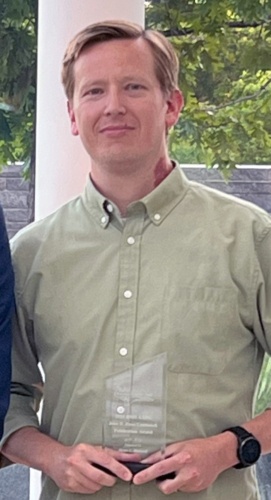 “Geological, Geochemical, and Reservoir Characterization of the Uteland Butte Member of the Green River Formation, Uinta Basin, Utah”
“Geological, Geochemical, and Reservoir Characterization of the Uteland Butte Member of the Green River Formation, Uinta Basin, Utah”
Justin E. Birdwell
Justin Birdwell is the winner of the 2023 RMS-AAPG John D. Haun Landmark Publication Award for his influential publications in the Rocky Mountains. Justin is a highly regarded geologist known for his dedication to data and sharing valuable information. His extensive research involving SRA, XRD, FTIR, and XRF analysis on Rockies rocks has made him a sought-after collaborator. With over 76 publications to his name, Justin has made significant contributions to the geological sciences in the Rocky Mountains. Notably, his lead-authored paper on the “Geological, Geochemical, and Reservoir Characterization of the Uteland Butte Member of the Green River Formation, Uinta Basin, Utah,” published in 2015, has greatly influenced the understanding of the lower Green River Formation oil play. Justin’s ongoing work, data gathering, and knowledge sharing continue to impact the geological community and drive progress in the field. His individual papers are exceptional, but the cumulative impact of his body of work is truly remarkable.
2022
Jane Estes-Jackson and Donna S. Anderson Ph.D.
“Revisiting and Revitalizing the Niobrara in the Central Rockies” – RMAG, 2011
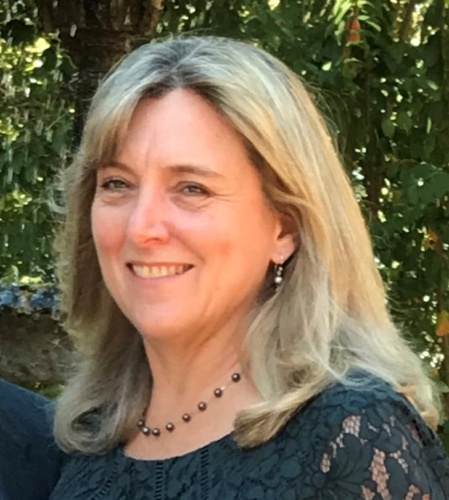
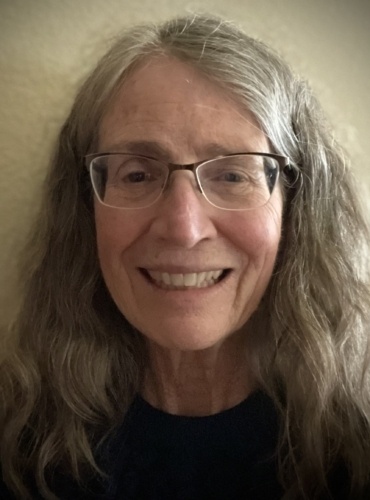
(Left – Jane Estes-Jackson & Right – Donna S. Anderson Ph.D.)
2021
Ancient Landscapes of Western North America: A Geologic History with Paleogeographic Maps
Co-authors: Ronald C. Blakey and Wayne D. Ranney
Global paleogeographic maps, which provide glimpses of our planet throughout geologic time, have become a requisite for earth scientists, whether they are exploring for the next hydrocarbon source rock play or examining aspects of climate change throughout the earth’s history. Ancient Landscapes of Western North America: A Geologic History with Paleogeographic Maps, published by Springer in 2018, provides an exceptional portrait of our landscape through time. Authors Ron Blakey and Wayne Ranney write in the book’s introduction “by using the paleogeographic maps contained in this book, one can literally see the sequential development of the Western landscape and take a trip on a virtual time machine, revealing scenes that are long gone from this planet.” The images provided in this publication are beautifully illustrated and detailed. The accompanying text is clear and relatable for all who have an interest in geologic history and the science that goes into the interpretation and creation of these images. For their work in providing a unique visual and written description of our western landscape through time, we are honored to present authors Ron Blakey and Wayne Ranney with the 2021 John D. Haun Landmark Publication Award.
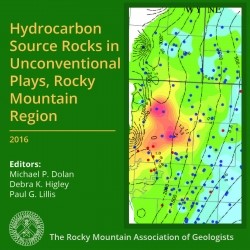 2020
2020
Rocky Mountain Association of Geologists 2016 Guidebook: Hydrocarbon Source Rocks in Unconventional Plays, Rocky Mountain Region
editors: Michael P. Dolan, Debra K. Higley and Paul G. Lillis
Few imagined that source rocks, along with adjacent carrier beds, would become a major target for exploration and development, leading the US to become the global leader in oil production. The oil and gas industry’s transition in the last decade to unconventional plays has renewed an interest in understanding the petroleum geochemistry of source rocks. RMAG’s 2016 Guidebook entitled Hydrocarbon Source Rocks in Unconventional Plays, Rocky Mountain Region, focused on the science behind these new reservoirs and is the 2020 recipient of the John D. Haun Landmark Publication award. This volume, a timely follow-up to RMAG’s 1984 source rock guidebook, features a collection of articles that provides insight into the petroleum systems of the some of the major resource plays in the Rocky Mountain Region, such as the Bakken and Niobrara. Additionally, the volume showcases formations with ‘new’ resource play potential, such as the Tyler in the Williston Basin and the Chuar Group in Arizona and New Mexico. We commend editors Michael P. Dolan, Debra K. Higley and Paul G. Lillis for their efforts in assembling a collection of relevant papers to help us better understand petroleum systems in the Rockies and the ongoing exploration and development of unconventional reservoirs.
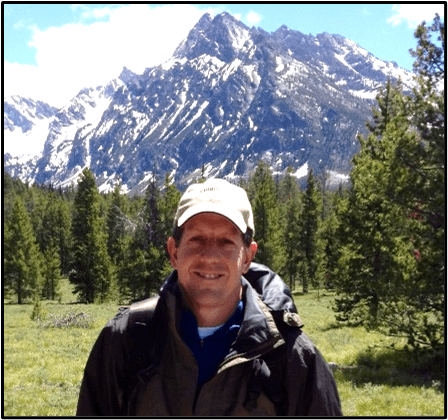 Michael Dolan is the co-founder of Dolan Integration Group (DIG) and QuickStartX. He is an AAPG Certified Petroleum Geologist #6085 He is a graduate of the University of Illinois at Chicago with a BS in Geology and the Colorado School of Mines with an MS in Geochemistry. Michael specializes in organic geochemistry with over 20 years of oil and gas industry experience for DIG, Mobil, and ExxonMobil.
Michael Dolan is the co-founder of Dolan Integration Group (DIG) and QuickStartX. He is an AAPG Certified Petroleum Geologist #6085 He is a graduate of the University of Illinois at Chicago with a BS in Geology and the Colorado School of Mines with an MS in Geochemistry. Michael specializes in organic geochemistry with over 20 years of oil and gas industry experience for DIG, Mobil, and ExxonMobil.
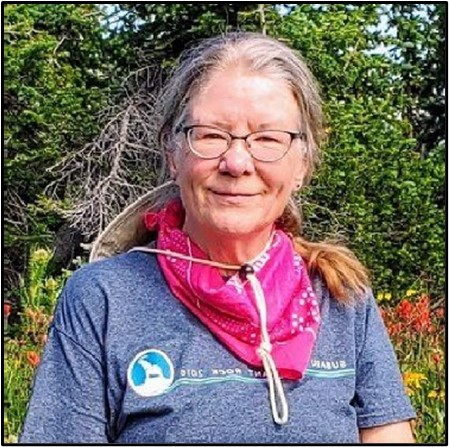
Debra Higley is an emeritus petroleum geologist with the U.S. Geological Survey (USGS) in Denver, Colorado. Her B.S. in geology is from Colorado Mesa University, and M.S. in geochemistry and Ph.D. in geology are from the Colorado School of Mines. She was a uranium exploration geologist in Grand Junction, Colorado and Casper, Wyomingfrom 1976 to 1981, and was with the USGS from 1982 to 2019. Her research and publications have focused on petroleum system modeling and petroleum resource assessment for basins in North and South America. Debra served as secretary, second vice-president, president-elect, and president (2013) for the Rocky Mountain Association of Geologists (RMAG).
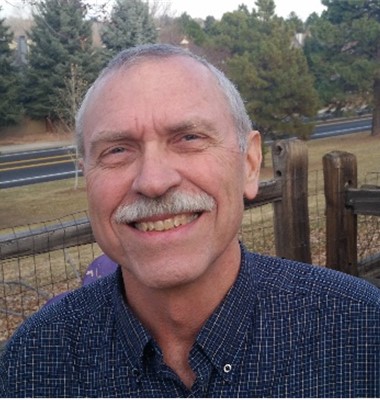
Paul Lillis is a petroleum geochemist recently retired from the U.S. Geological Survey (USGS) in Denver, Colorado. He received a B.A. in geology from San Jose State University, an M.S. in geology from San Diego State University, and a Ph.D. in geochemistry from Colorado School of Mines. He was a petroleum exploration geologist with Atlantic Richfield (ARCO) for eight years (1978 to 1986) in Colorado, California, and Texas, and was with the USGS from 1987 to 2018. His research focuses on the application of petroleum and source-rock geochemistry to identifying, characterizing, and mapping petroleum systems.
2019
Utah Geological Association’s Publication 28: Geology of Utah’s Parks and Monuments
Douglas Sprinkel, Thomas Chidsey, Jr. and Paul Anderson
The Utah Geological Association has a history of producing notable publications examining and describing the amazingly diverse geology of the State of Utah. One of the most notable amongst their numerous publications is the UGA-28 entitled “Geology of Utah’s Parks and Monuments,” which provides a geologic overview for all of Utah’s National Parks and Monuments, as well as several State Parks. Since the printing of the first edition in 2000, this book has sold about 500 copies each year, nearly 10,000 copies total to date, and is by far the number one selling UGA book. The third edition was published in 2010 and a fourth edition with updated geology and the addition of new monuments is in the works. Douglas Sprinkel, Thomas Chidsey, Jr. and Paul Anderson are deserving of recognition for assembling and continuing to update this book.
Many geologists have traveled to Utah over the past decades to study the state’s geology and to explore for a variety of geologic resources. The spectacularly well-exposed geology across the state is one the most important resources that Utah has to offer to future generations of geologists, to people interested in geology, and to it citizens. The geologic examples studied from Utah are used in classrooms as well as corporate boardrooms. Some of Utah’s best geology is showcased in its many national and state parks, monuments, and recreation areas. Places such as Arches, Bryce, Canyonlands, and Zion are well known for their grand geology and inspiring geologic vistas. But other parks such as Capital Reef, Dinosaur, Goblin Valley, and Snow Canyon are equal in geologic majesty to their more visited counterparts. Simply put, Utah has some of the most spectacular examples of classic geology found anywhere in the world, and the UGA-28, “Geology of Utah’s Parks and Monuments,” is an invaluable resource when exploiting Utah’s numerous geological treasures!
2018
AAPG Memoir 112: Imaging Unconventional Reservoir Systems, 2017
In addition to editing the AAPG Memoir 112, Terri Olson is the coauthor on two of the papers in the volume. The compilation covers the latest technological developments by many of the leading experts in the characterization of unconventional rocks. It provides specific examples from rocks not only in the Rocky Mountain region, but also from throughout the world. It also discusses many new technologies, and the integration of multiple datasets. It is an invaluable reference for the petroleum geoscientist attempting to unravel the micro to nano-porous story of unconventional reservoirs. Terri was uniquely qualified to edit this memoir because of her 33 years of extensive experience as a geologist and petrophysicist at Amoco, Tom Brown, EOG, FEI, and as a consultant. After publishing her first major paper, on Hugoton Field reservoir characterization in the AAPG Bulletin, Terri became active on the RMAG and AAPG publications committees, eventually chairing both. She co-edited a special publication on the Piceance Basin, for which she authored a paper on White River Dome Field. She has been an associate editor of the AAPG Bulletin for over 15 years, most recently serving for 3 years as senior associate editor for unconventionals. Terri also currently serves as President of RMAG. Terri’s work on this memoir is very timely given the ever-increasing focus in the Rockies and across the country to explore for and develop unconventional reservoirs. Terri is most deserving of the John D. Haun Landmark Publication Award.
2016
Forrest G. (Barney) Poole (top photo) and Charles A. (Charlie) Sandberg (bottom photo) have spent a lifetime adding to the knowledge and understanding of the Rocky Mountains, and especially of the Great Basin. Together they have published 45 papers on Rocky Mountain topics and separately have participated in about 250 other co-authored papers and abstracts.
Barney Poole has been with the U.S. Geological Survey throughout his 62-year scientific career. He started work with the Survey in 1954, on the Colorado Plateau Uranium Program, studying Triassic regional stratigraphy and Permian-Jurassic fluvial and eolian sedimentary structures. Following the Colorado Plateau project, his work shifted to the Great Basin where he participated in mapping and stratigraphic studies at the Nevada Test Site from 1959 to 1966. He spent the next 10 years in central Nevada studying Paleozoic stratigraphy and structure, during which time he and colleague Daniel Shawe discovered a large economic deposit of sedimentary barite in the Toquima Range. Most of his Survey projects have been in the broad region of the Basin and Range geologic province to determine stratigraphic and structural controls of potentially economic sedimentary mineral deposits and petroleum accumulations. The projects focused on concentration and residence of metals and source of petroleum in kerogen-rich marine Paleozoic ocean-basin and foreland-basin rocks (e.g., metalliferous oil shales in the Upper Devonian Woodruff Formation of central Nevada, Upper Mississippian Heath Formation of central Montana, and Permian Phosphoria Formation of southeastern Idaho.) In 1984, he co-authored a landmark paper with George Claypool for oil exploration in eastern Nevada and western Utah, “Petroleum source-rock potential and crude-oil correlation in the Great Basin” (RMAG’s “Hydrocarbon Source Rocks of the Greater Rocky Mountain Region”, 1984.) His published articles and abstracts have reported on both local and regional stratigraphic and structural studies in most states in the western U.S. and in northwestern Mexico.
Charlie Sandberg started work with the U.S. Geological Survey in 1950, mapping Eocene coal beds in the Powder River Basin. He has worked for the Survey for 66 years, except for two years with the 2nd Infantry Division during the Korean War, and continues today as an emeritus scientist. His introduction to the Williston Basin oil patch occurred in 1951 as he was driving to Sydney, Montana to work on the Fort Union coal. Listening to the radio, he heard the announcement that the first pint of oil had been recovered in the basin from the Amerada No. 1 Clarence-Iverson well. In 1954, he began subsurface work on the entire Phanerozoic section in the Williston Basin and correlation of Devonian and Mississippian formations to outcrops in the Northern Rocky Mountains. Since then he has measured lower Paleozoic sections in Alberta, Idaho, Montana, Wyoming, Colorado, Utah, Nevada, New Mexico, Arizona, and California, and has published extensively on these areas. He left the Northern Rockies and began work in Utah and Nevada in 1969. Besides stratigraphic and paleotectonic work, he has studied and published on conodont faunas and petroleum potential of the region. He co-authored with Raymond Gutschick an overlooked but farsighted paper about the potential of the Mississippian Delle Phosphatic Member of the Woodman Formation as a source-rock for oil generation in western Utah and eastern Nevada (RMAG’s “Hydrocarbon Source Rocks of the Greater Rocky Mountain Region”, 1984.)
Barney Poole and Charlie Sandburg continue their research and publications today as emeritus scientists for the USGS. The Rocky Mountain Section of AAPG is pleased to honor their contributions, especially for those papers focused on the source rock potential in the Great Basin, with the John D. Haun Landmark Publication Award.
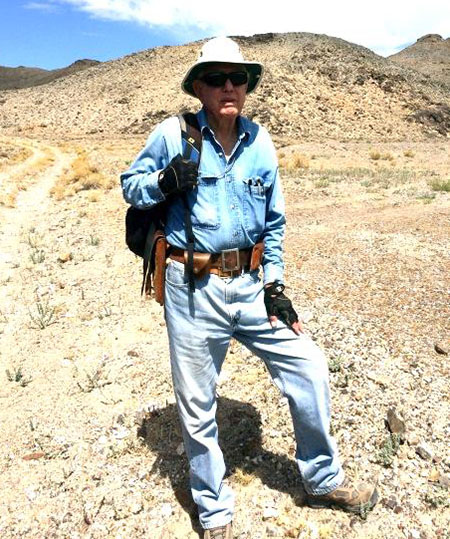
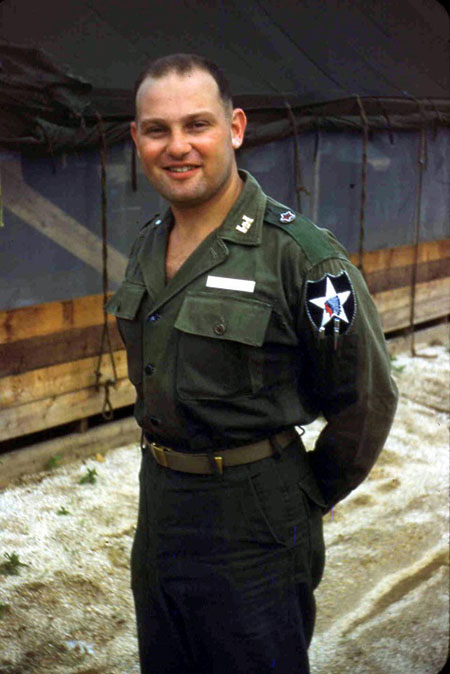
2015
Leigh C. Price (deceased) and Julie A. LeFever (North Dakota Geological Survey) were recognized for their 1992 paper, Does Bakken horizontal drilling imply a huge oil-reservoir base in fractured shales?, in J. W. Schmoker, E. B. Coalson, and C. A. Brown, eds., Geological Studies Relevant to Horizontal Drilling: Examples from Western North America: Denver, Colorado, Rocky Mountain Association of Geologists, p. 199-214. The award is presented for a publication that over the past decade has had exceptional influence on developing new hydrocarbon plays or deeper understanding of fundamental geology within the Rocky Mountain region. This article is exceptionally data-rich and well-reasoned. It was published a decade before the shale gas and shale oil ‘boom’ started. Price and LeFever made the case for the exceptionally large, untested, oil potential of the Bakken Formation in the Williston Basin. With uncanny accuracy, they predicted the essential characteristics of the Bakken shale oil play and the utility of horizontal wells. Now, the Bakken Shale is a model for shale resource play exploration globally.

Julie LeFever accepts the award from Sue Cluff, RMS AAPG President.

Heide Dolan accepts the award for her stepfather, Leigh Price from Sue Cluff.
2014
Robert A. Schalla and Eric H. Johnson, co-editors of Oil Fields of the Great Basin, Nevada Petroleum Society Special Publication, 1994.
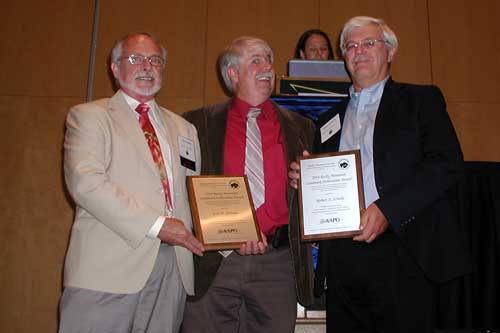
Eric H. Johnson and Robert A. Schalla presented by RMS-AAPG President Elmo Brown.
2013
Susan M. Landon, Mark W. Longman, and Barbara A. Luneau, co-authors of: Longman, M.W., B.A. Luneau, and S.M. Landon, 1998, Nature and distribution of Niobrara lithologies in the Cretaceous Western Interior Seaway of the Rocky Mountain region: The Mountain Geologist, v. 35, p. 137-170 & Landon, S.M., M.W. Longman, and B.A. Luneau, 2001, Hydrocarbon source rock potential of the Upper Cretaceous Niobrara Formation, Western Interior Seaway of the Rocky Mountain region: The Mountain Geologist, v. 38, p. 1-18.
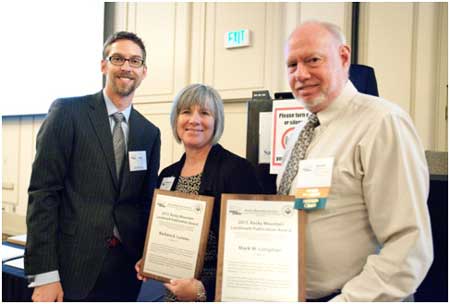
2013 Award – Barbara A. Luneau & Mark W. Longman (Susan M. Landon not pictured), presented by RMSAAPG President Michael Vandenberg
